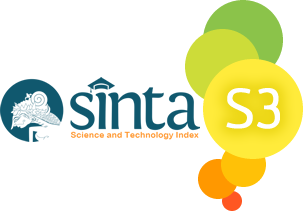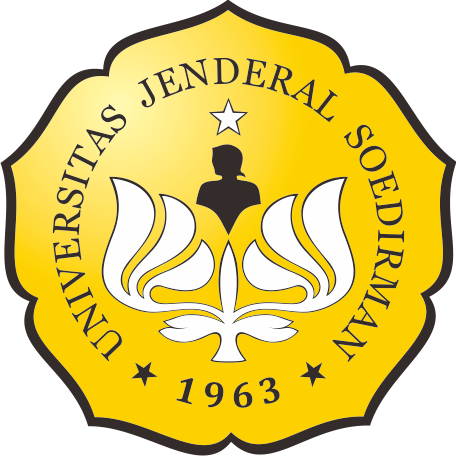COMPATIBILITY OF INSECTICIDES WITH ENTOMOPATHOGENIC FUNGI Beauveria bassiana AND Metarhizium anisopliae
Abstract
Insecticide use has produced negative impact by affecting the non-target predatory organisms in nature, one of which is the entomopathogenic fungi, Beauveria bassiana and Metarhizium anisopliae. Interactions occur, however, between insecticides and the entomopathogens. The combination of insecticides at a low dose and an entomopathogenic fungus can work synergistically to increase pest insect mortality. This combination is particularly advantageous because it decreases the insecticide dose applied, reduces environmental contamination, and decreases pest resistance. The study purpose was to determine the compatible working insecticide dose and the entomopathogenic fungi B. basiana and M. anisopliae. The experimental design applied completely randomized design consisting of 15 treatments and four replicates. There were five types of insecticides with three different doses each (0.5 × Dose of Field (DF), 1 × DF, and 2 × DF), whereas the fungal isolates included B. basiana and M. anisopliae. The parameters observed were the germination percentage of conidia, the percentage of inhibition, and the number of conidia.ml-1. Data were analyzed using ANOVA (5% error rate). The mean values were analyzed by DMRT p < 0.05. Deltamethrin 0.5 x DF, and imidacloprid 0.5 x DF demonstrated the highest conidial germination in B. basiana and M. anisopli, respectively. Insecticides showing the highest vegetative growth on B. basiana and M. anisopliae at 7 DAI was imidacloprid 0.5 x DF, while at 14 DAI was imidacloprid 0.5 x DF and chlorphyrifos 2 x DF, respectively. The highest conidial production of the fungi was triggered by imidacloprid 0.5 x DF. Based on compatibility calculation, imidacloprid 0,5 x DF worked with B. basiana (BI: 67.77) and M. anisopliae (BI: 67.16).
Keywords
Full Text:
PDFReferences
Akbar S, Freed S, Hameed A, Gul HT, Akmal M, Malik MN, Naeem M, Khan MB. 2012. Compatibility of Metarhizium anisopliae with different insecticides and fungicides. African Journal of Microbiology Research. 6(17):3956-3962.
Alizadeh A, Samih MA, Khezri M, Riseh RS. 2007. Compatibility of Beauveria bassiana (Bals.) Vuill. Eith several insecticides. International Journal of Agriculture & Biology. 9(1):31-34.
Alves SB, Monino A. Jr, Almeida JEM. 1998. Produtosfitossanitários eentomopatogênicos. Sâo Paulo: Fealq.
Alves SB, Haddad ML, Faion M, de Baptista GC, Rossi-Zalaf LS. 2007. Novo ındice biologico para classificacao da toxicidade de agrotoxicos para fungos entomopatogenicos. Brasılia: Anais do X Siconbiol.
Ambethgar V. 2009. Potential of entomopathogenic fungi in insecticide resistance management (IRM): A review. Journal of Biopesticides. 2(2):177-193.
Asi MR, Bashir MH, Afzal M, Ashfaq M, Sahi ST. 2010. Compatibility Of Entomopathogenic Fungi, Metarhizium anisopliae and Paecilomyces fumosoroseus with Selective Insecticides. Pak. J. Bot. 42(6):4207-4214.
de Oliveira CN, Neves PMOJ, Kawazoe LS. 2003. Compatibility Between The Entomopathogenic Fungus Beauveria bassiana and Insecticides Used In Coffee Plantations. Scientia Agricola. 60(4):663-667. https://doi.org/10.1590/S0103-90162003000400009
Golshan H, Saber M, Majidi-Shilsar F, Bagheri M, Mahdavi V. 2013. Effects of Common Pesticides Used in Rice Fields on the Conidial Germination of Several Isolates of Entomopathogenic Fungus, Beauveria bassiana (Balsamo) Vuillemin. J. Entomol. Res. Soc. 15(1):17-22.
Hassan SA. 1989. Testing methodology and the concept of the IOBC/WPRS working group. P.C. Jepson, editor. Pesticides and Non-Target Invertebrates. Wimborne: Dorset.
Herdatiarni F, Himawan T, Rachmawati R. 2014. Eksplorasi Cendawan Entomopatogen Beauveria sp. menggunakan Serangga Umpan pada Komoditas Jagung, Tomat dan Wortel Organik Di Batu, Malang. Jurnal HPT. 1(3):1-11.
James R, Elzen GW. 2001. Antagonism between Beauveria bassiana and Imidacloprid when combined for Bemisia argentifolii (Homoptera: Aleyrodidae) control. J. Econ. Entomol. 94(2):57-61. https://doi.org/10.1603/0022-0493-94.2.357
Karnataka. 2007. Effect of Agrochemicals on Growth and Sporulation of Metarhizium anisopliae (Metschnikoff) Sorokin. J. Agric. Sci. 20(2):410-413.
Moorhouse ER, Charnley AK, Gillespie AT. 1992. Review of the biology and control of the vine weevil, Otiorhynchus sulcatus (Coleoptera: Curculionidae). Ann. Appl. Biol. 121(2):431-454. https://doi.org/10.1111/j.1744-7348.1992.tb03455.x
Schumacher V, Poehling H. 2012. In vitro effect of pesticides on the germination, vegetative growth, and conidial production of two strains of Metarhizium anisopliae. Fungal Biologi. 116:121-132. https://doi.org/10.1016/j.funbio.2011.10.007
Singh RK, Vats S, Singh B. 2014. Compatibility Analysis of Entomopathogenic Fungi Beauveria bassiana (NCIM No-1300) With Several Pesticides. Research Journal of Pharmaceutical, Biological and Chemical Sciences. 5(1):837-844.
Vijila SM, Das SSM, Sekar RRJ. 2011. A Novel Chemical-Microbial Hybrid Pesticides in the Management of Sitohpilus oryzae L. International Journal of Pharma and Bio Sciences. 2(4):1-6.
Article Reads
Total: 3321 Abstract: 2305 PDF: 1016Refbacks

This work is licensed under a Creative Commons Attribution-ShareAlike 4.0 International License.
This website is maintained by:
Bio Publisher
The Faculty of Biology Publishing
Faculty of Biology
Universitas Jenderal Soedirman
Jalan dr. Suparno 63 Grendeng
Purwokerto 53122
Telephone: +62-281-625865
Email: biologi@unsoed.ac.id
T his website uses:
OJS | Open Journal System
A free journal management and publishing system that has been developed by the PKP (Public Knowledge Project) version 2.4.8.0.
All article content metadata are registered to:
Crossref
An official nonprofit Registration Agency of the International Digital Object Identifier (DOI) Foundation.
Articles in this journal are indexed by:









